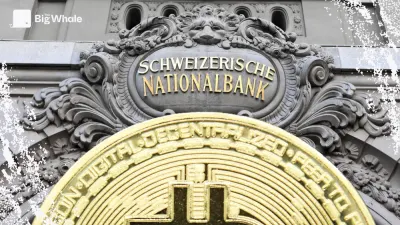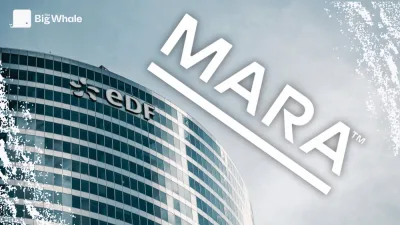TBW - Taiko: What's the biggest Based Rollup worth?

What you need to know 🐳
Taiko is the first operational Based Rollup, a pioneer in a sector that, despite its challenges, holds major promise - notably that of unified liquidity with Ethereum.
Facing stiff competition between Ethereum's layer 2s, Taiko will have to stand out by exploiting the unique advantages of Based Rollups (read our analysis on the topic).
Introduction 🧬
Taiko is an Ethereum layer 2 that launched in May 2024. More specifically, it is a rollup, the most secure type of layer 2, as it publishes its transaction data on Ethereum.
Within a rollup, transactions are organised by a sequencer. Even if the latter is no longer functioning, users can still withdraw their funds to Ethereum.
Taiko has the particularity of being a "Based Rollup", meaning that its sequencer is the Ethereum network. This gives it better interoperability with layer 1 and allows it to inherit its resistance to real-time censorship as well as its continuous operation.
This also includes backlashes, including slower block production; we'll come back to the challenges of Based Rollups later.
For now, Taiko is based on an optimistic validation system, meaning that transactions are finalised after 7 days and anyone can cancel an invalid transaction during that time.
Taiko wants to change its validation model, it already incorporates several types of proof including attestations made by a secure execution environment (TEE) as well as zero-knowledge proofs. This will speed up the finalisation of transactions and make the blockchain more robust.
Taiko is organising "Trailblazers" incentive campaigns that encourage people to carry out transactions and contribute to the liquidity of the network.
Financing 💰
Taiko has raised a total of $37 million:
- 22 million at its June 2023 seed from HongShan, Generative Ventures, OKX Ventures, IOSG and KuCoin Ventures
- 15 million at its March 2024 Series A from Hashed Fund, Lightspeed Ventures, Token Bay Capital and Generative Ventures
Team 👾
Daniel Wang is the CEO of Taiko Labs, he previously worked at Google and Loopring, another Ethereum layer 2.
Brecht Devos is the CTO of Taiko Labs, he also used to work at Loopring.
Terence Lam is the Chief Strategy Officer at Taiko Labs and teaches at the University of Hong Kong.
Ecosystem 🤝
Taiko's ecosystem is still nascent, with most apps either spanning multiple ecosystems or being forks of other, better-known apps.
Avalon Labs is the lending protocol with the most deposited value in the Taiko ecosystem, it is an application present on many blockchains.
Tako Tako, another lending protocol, is in second place and is an application native to Taiko.
iZiSwap is the first decentralised exchange on the network, it is a DEX present on many other blockchains.
Unagiswap and Panko Finance are the two Taiko native DEXs with the most liquidity.
Challenges and limitations 😬
Based rollups have several challenges compared to traditional rollups.
Firstly, Taiko produces blocks at the same rate as Ethereum, i.e. every 15 seconds, whereas traditional sequencers can produce blocks much faster, for example 250 milliseconds for Arbitrum. This therefore creates a much less fluid user experience.
Furthermore, Taiko "abandons" most of the SRM generated on its chain to Ethereum's validators.
Finally, Taiko's sequencing organisation remains quite expensive and the "proposer" of each block must pay a high price. When the chain was launched, the Taiko team even had to offer compensation to these proposers as the activity was not profitable in itself. This is no longer the case now that the network's activity has grown.
The team is well aware of these problems and is preparing solutions, including the introduction of based preconfirmations and the development by Taiko Labs of "Gwyneth", a new Based Rollups development stack capable of overcoming their weaknesses. This more emerging project, designed by the same team, seems theoretically superior to Taiko.
For more information on based rollups and their future advances, see our analysis of them.
The TAIKO token 🌕
There are a total of one billion Taiko tokens, but only 82 million are in circulation at the moment.
The token has no real use yet beyond network governance. For the time being, it is mainly used as incentives during Trailblazers programmes to generate activity.
Investor and team tokens are locked for 1 year and then released for 3 years.
At the token's launch in June 2024, the breakdown was as follows:

Competitors ⚔️
Taiko is competing with other generalist layer 2s based on the Ethereum Virtual Machine (EVM) to attract developers and applications.
Arbitrum and Base dominate this sector by far and their leading position puts them in a virtuous circle that attracts ever more users and developers.
Taiko's strength is that it is a Based Rollup, meaning it has better interoperability with Ethereum and with future Based Rollups that will launch, including those developed via Gwyneth (Taiko Labs) or the Spire Labs teams.
The advantage of Based Rollups is that they should be able to benefit from unified liquidity between them, even if they are competitors. This will prevent fragmentation of the business and contribute to healthier competition that will benefit them all.
In the long term, Based Rollups may eventually reverse the network effects of the largest Layer 2s since the latter risk evolving in silos without benefiting from good interoperability with Ethereum or chains that are not in their clusters (Optimism's Superchain, Polygon's AggLayer, ZkSync's Elastic Chain, etc.).
Regulation ⚖️
The token does not present any major regulatory risks, although it could be considered in the US as an unauthorised issue of financial securities (like the majority of projects in the sector). However, the change in US administration, marked by the departure of Gary Gensler from the SEC's leadership, suggests a reduced risk of prosecution.
The Big Whale's view 🐳
For the time being, Taiko is suffering more from the disadvantages associated with its Based Rollup status than it is reaping the benefits. It is the pioneer of this promising new type of rollup, which aims to unify activity and liquidity between Ethereum and its layers 2.
As a pioneer, it offers many lessons on how to improve this model. Taiko Labs' second project, Gwyneth, is expected to incorporate solutions to the Based Rollups issues. It is not clear whether Gwyneth will have a new token or whether Taiko's token will be reused. Nevertheless, it's hard to understand the team's strategy of developing two projects simultaneously.
The Based Rollups still have many challenges ahead but they should have the ability to grow together thanks to their synchronised composability. It looks like many Based Rollups will launch in 2025 and they will surely become an important narrative in the ecosystem. Taiko has the advantage of being the first to be deployed and is therefore already slowly starting to build its ecosystem.



